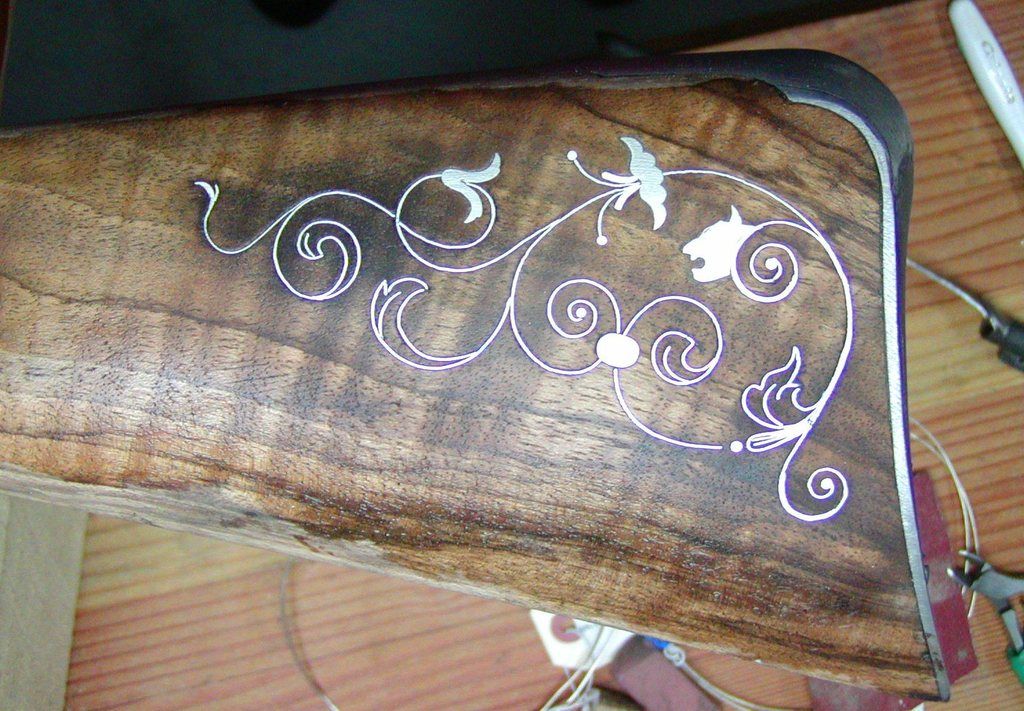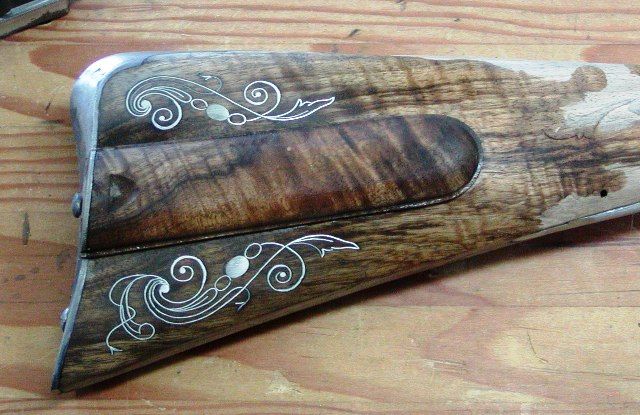- Joined
- Nov 26, 2005
- Messages
- 5,223
- Reaction score
- 10,881
Hi Folks,
Thought you might like to see some wire inlay work on a mid-18th century English rifle. It is based on French pattern sheets at the time but I designed the work. The silver inlays will all be engraved.
dave

Thought you might like to see some wire inlay work on a mid-18th century English rifle. It is based on French pattern sheets at the time but I designed the work. The silver inlays will all be engraved.
dave







